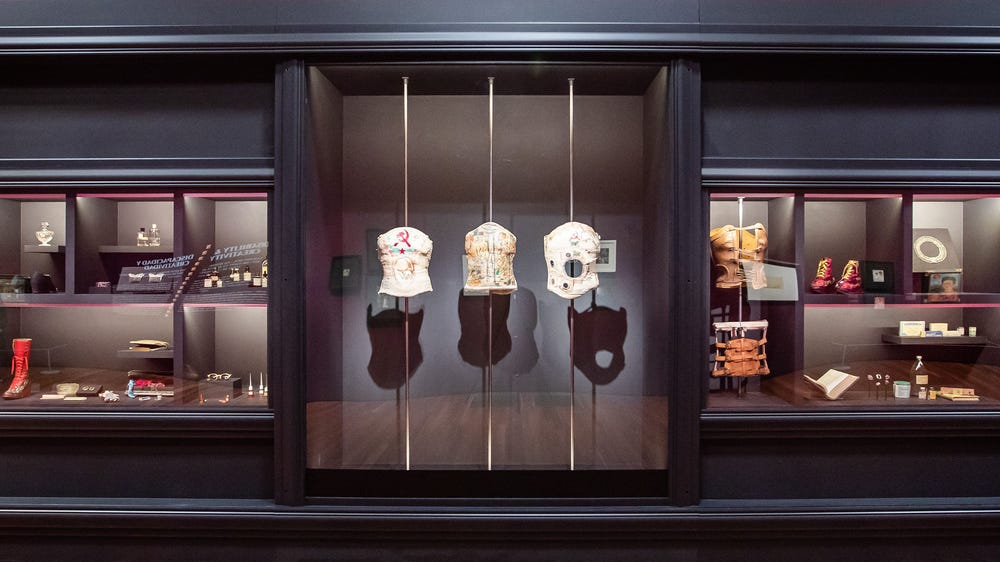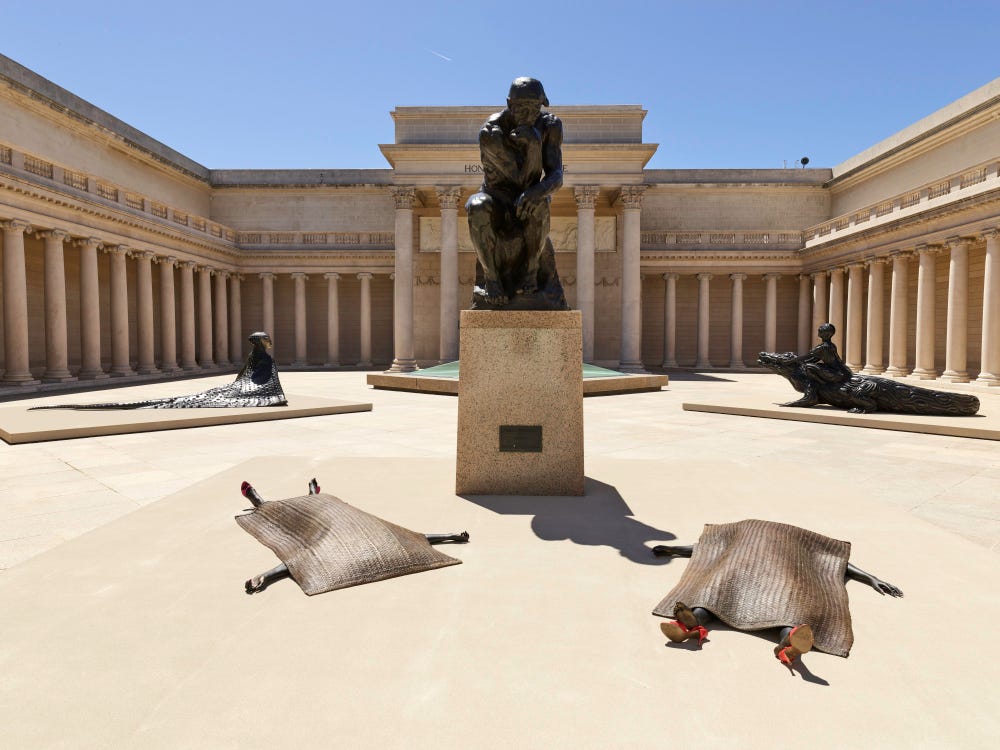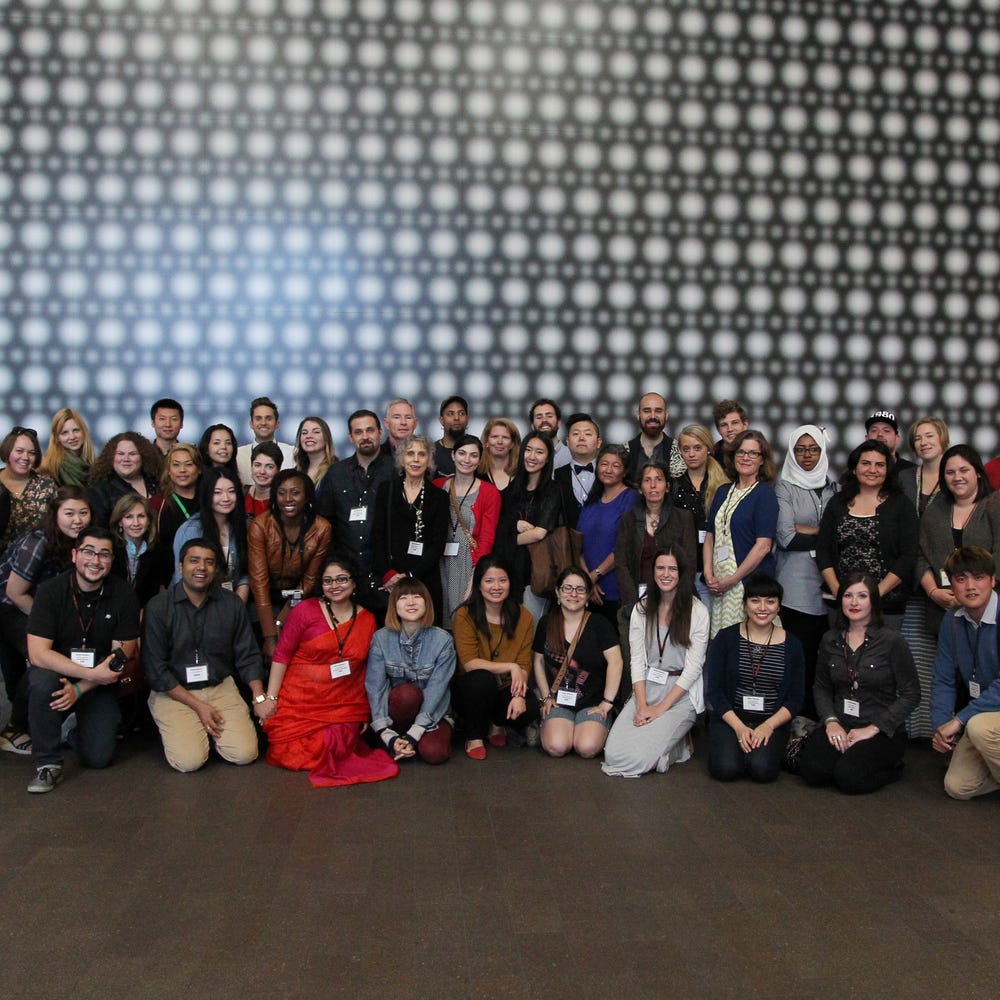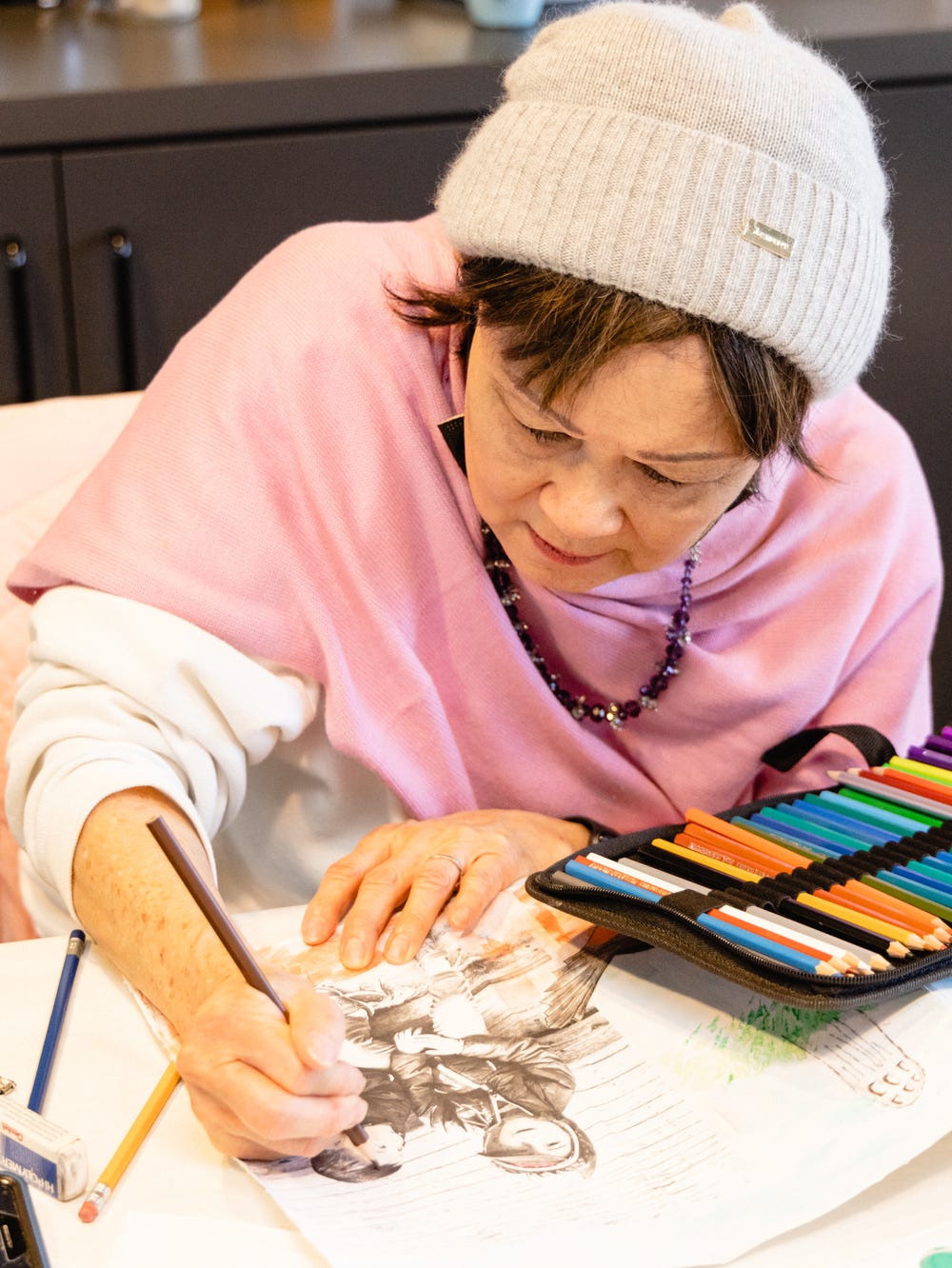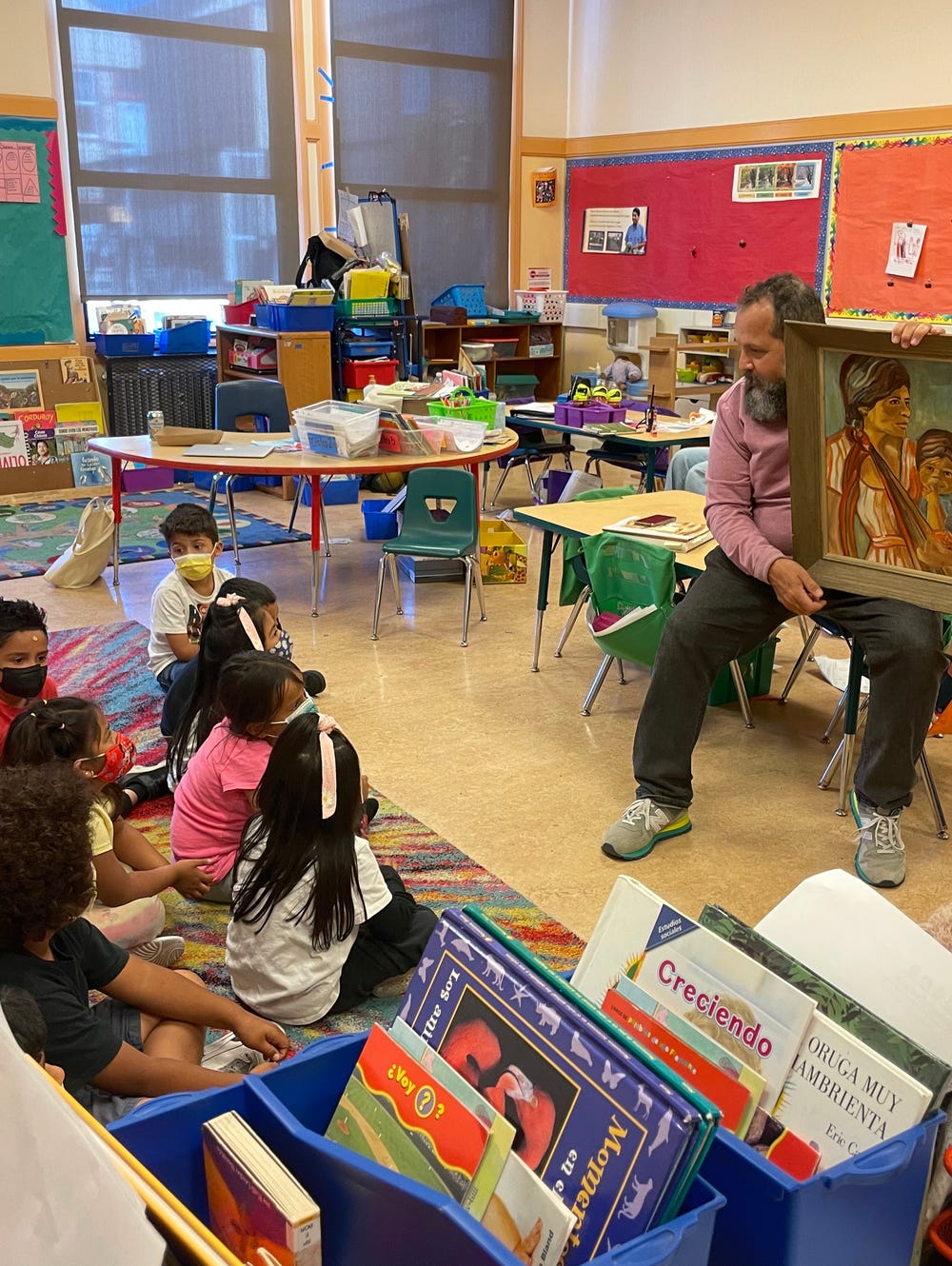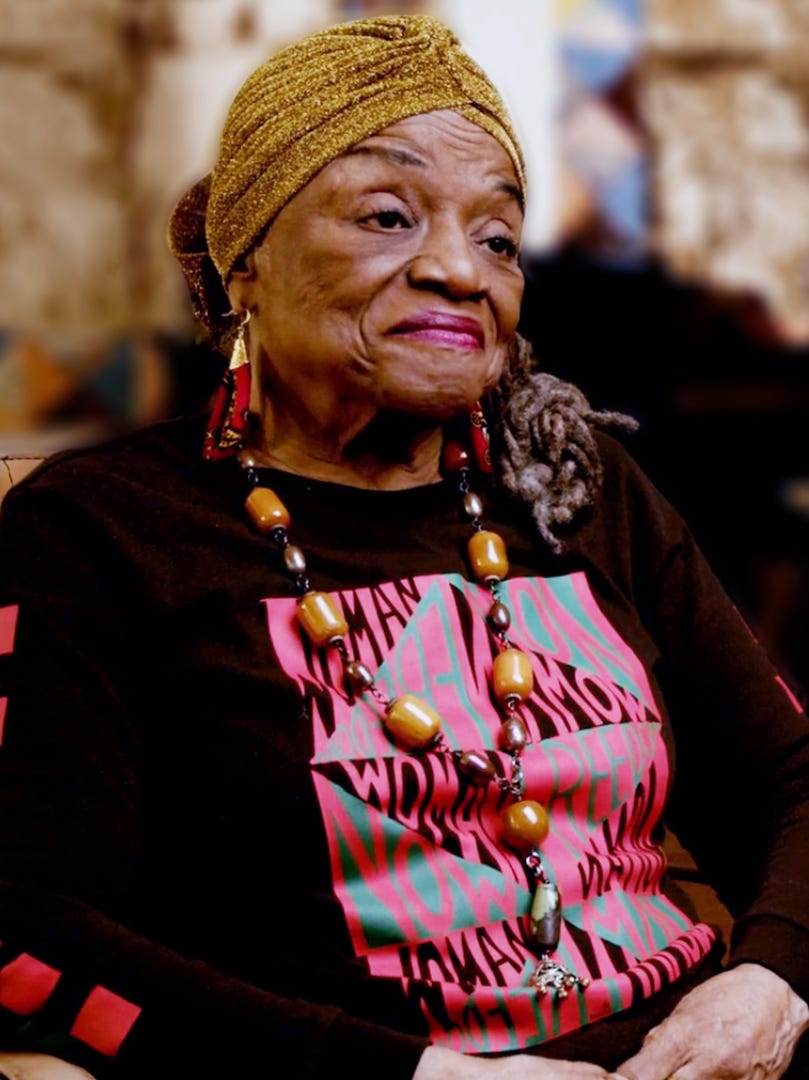Looking Back \ Facing Forward: Inclusion and Intersectionality in our Exhibition History
By Krista Brugnara and Caroline McCune
May 27, 2021
In order to engage visitors over the decades, the Fine Arts Museums of San Francisco’s exhibition program has presented art in various media from a variety of places, time periods, makers, and cultures. Exhibitions have featured scholarship, highlighting both the Museums’ collections and loans from public and private collections across the world, to relay meaningful narratives and create experiences through which visitors can broaden their understanding of art, society, and perhaps, themselves.
Over the last two-and-a-half years, the Museums have methodically evaluated our many processes and practices to better articulate our institutional goals and priorities to ourselves and to the public. Through a series of working groups, we developed a more refined process to propose and evaluate exhibitions. As part of this process, we began to ask curators how a proposed exhibition will add new voices to existing scholarship, challenge existing art historical canons, and contribute to discourse on current world issues. For over a year, we have continued to refine this process via video-conferencing as we isolated at home due to Covid-19 restrictions. The Museums’ goal of becoming an anti-racist institution provided an impetus to reflect on the history of our exhibition program.
While education is at the forefront of our mission, the Museums depend on earned revenue from the exhibition program to sustain operating costs—this is the reality many museums will continue to face until an effort is made by the industry to reconfigure this common operational model. We often refer to exhibition attendance numbers to define financial success and to forecast the success of future exhibitions. Attendance often soars when artist names and exhibition narratives are familiar; however, our core mission to educate comes with a responsibility to evaluate what we present and why.
STUDY TOOL
We wanted a tool to help study and evaluate our program in order to inform and help achieve our goal of developing a truly diverse exhibition program as we strive to be a more inclusive museum. It is in this spirit that the exhibitions department began to study the Museums’ programming from a historical perspective. We started this project by using an existing chronology of all exhibitions held at the de Young and Legion of Honor museums since 1979 (the year the museums began tracking attendance) through the present. This exercise begins to reconcile the Museums’ past achievements with its shortcomings and to establish a baseline from which to evolve and improve.
We first divided the exhibitions into two types: “tentpole” and “focus.” Both tentpole and focus exhibitions are on view for a limited period, tend to occur in designated exhibition spaces, and have distinct exhibition design from collection galleries. An exhibition has historically been considered a tentpole if it met at least two of the following criteria: it’s ticketed, it has an accompanying publication, its square footage is greater than 5,000 square feet, its attendance is tracked, and it has a significant budget. On the other hand, a focus exhibition is not ticketed, typically does not have an accompanying publication, receives fewer resources, and usually has a smaller physical footprint. Due to the shelter-in-place restrictions and our inability to access hard-copy archival files at this time, we were only able to include focus exhibitions as far back as 1996 in this project, so our list is incomplete. Based on the digital information that we were able to access, we tracked 193 tentpole exhibitions since 1979, and 200 focus exhibitions since 1996.
Within these two designations, we began to study our exhibitions in terms of representation of historically underrepresented groups. This necessitated creating provisional classifications for standard groups to assess how inclusive our program has been. These groups were classified in line with the Museums’ collecting areas, as well as racial and cultural identity, sex and gender, and disability.
- Racial and cultural: African Art, African American/Black Art, Ancient Art of the Mediterranean Basin, Art of the Ancient Americas, Asian Art, Asian American Artists or Artists of Asian Descent, Chicanx Art, Latinx Art, Native North American Art, Oceanic Art
- A classification called “Multidiversity” was designated for group exhibitions that cover a broad range of diverse topics
- Sex and gender: L.G.B.T.Q.I.+, Women
- Disability
Left: Installation view of Chicano Encounters, at the de Young, San Francisco, 2006. Right: Installation view of Women Impressionists: Berthe Morisot, Mary Cassatt, Eva Gonzalès, Marie Bracquemond, at the Legion of Honor, San Francisco, 2008.
While subjective in nature, multiple voices weighed in on how exhibitions could be recorded, from the exhibitions and curatorial departments to the archives and education departments, as well as the Museums’ IDEA Committee. Through these meetings, we solicited feedback on the value of the project for our colleagues and how to use various lenses to organize the material. While efforts to create a balanced program pre-date this exercise, we hope it leads us to better match the Museums’ intent with its impact by integrating our common goal of diversity, inclusion, equity, and access in a meaningful way.
MORE QUESTIONS THAN ANSWERS
As we proceeded with the review of our exhibition history, the project in some ways prompted more questions than answers. Some of the questions that emerged are as follows:
- How do we define the provisional classifications, and what is at stake if we retroactively classify an exhibition or artist by identity? For example, antiquities present a variety of unknowns. Similar questions arise frequently when cataloguing collections.
- What qualifies an exhibition as diverse or representative? Should an exhibition be categorized as diverse if an artist’s work is not directly dealing with an issue related to diversity, equity, inclusion, and/or accessibility? Past exhibitions such as Keith Haring: The Political Line and The Fashion World of Jean Paul Gaultier: From the Sidewalk to the Catwalk directly deal with L.G.B.T.Q. themes, whereas exhibitions of other L.G.B.T.Q. artists’ work do not always touch on these topics.
- How should we account for intersectionality and exhibitions that represent multiple groups that have been historically underrepresented? One recent example is Frida Kahlo: Appearances Can Be Deceiving, presented earlier this year. This exhibition explored Kahlo’s many complex identities which include indigenous, female, gender fluid, and disabled.
- How should the museum field account for monographic shows versus group and thematic shows? Some exhibitions make the biggest impact if they present artwork from a group of artists, yet there is a perception that solo shows are of greater significance. The Museums presented The Quilts of Gee’s Bend in 2006, an exhibition of more than 60 quilts by four generations of African American women. A show of great significance, Gee’s Bend highlighted the intergenerational artistry and creativity that flourished in an isolated community. It was also noted during our review process that the practice of a monographic exhibition is a construct that risks overlooking the art of unidentified artists, such as our collection of Navajo weavings, which were made by indigenous women.
Left: Installation view of The Quilts of Gee’s Bend, at the de Young, San Francisco, 2006. Right: Installation view from Native Artists of Western North America, at the de Young, San Francisco, 2017. Photograph by Randy Dodson
INITIAL FINDINGS
This project—despite its limitations—begins to create a baseline exhibition history, which shows:
- In general, the Museums exhibitions program has historically privileged the art and narratives of white, male artists.
- Focus exhibitions and multi-artist exhibitions typically have been more diverse than our tentpole exhibitions.
- 18 percent of 193 tentpole exhibitions since 1979 and 26 percent of 200 focus exhibitions since 1996 have featured the art of people of color
- 7 percent of tentpole exhibitions and 15 percent of focus exhibitions have focused on the work of women artists.
These findings reinforce the need for more exhibitions that feature the work of BIPOC, women, and L.G.B.T.Q I. artists and increased installations highlighting historical art from Africa, the Americas, and Oceania. These three geographic areas are well represented within the Museums’ collections galleries, but are not as well represented in our exhibition program. The base information could also be gleaned to evaluate periods of time; for example, the last five, ten, or twenty years versus the past forty years.
Left: Installation view from Olmec: Colossal Masterworks of Ancient Mexico, at the de Young, San Francisco, 2011. Right: Installation view from Embodiments: Masterworks of African Figurative Sculpture, at the de Young, San Francisco, 2015. Photography by Randy Dodson
The Museums are in the process of migrating collection and exhibition records to a content-management system called The Museum System (TMS) and are evaluating ways to utilize the new system to track our efforts. We will continue to collaborate across the Museums to expand our review of our hard-copy exhibition files to include exhibitions prior to 1979, so that the Fine Arts Museums can benefit from a more comprehensive review of its exhibition history since the Museums’ respective origins. Through this project, we will be able to more easily study patterns in our exhibition history. For example, in 1960, the de Young presented Ruth Asawa: Sculptures and Drawings, the first solo show of Ruth Asawa, a local Japanese American artist. Then, in 2006, the de Young organized the artist’s retrospective in The Sculptures of Ruth Asawa: Contours in the Air. Asawa’s work was also featured in the de Young’s Asian/American/Modern Art: Shifting Currents, 1900–1970 in 2008, the first comprehensive survey of modern Asian American artists, which sought to advance awareness of this underrepresented group in American art history.
Left: An installation view of Ruth Asawa’s first solo show in San Francisco, 1960. Artwork by Ruth Asawa © 2020 Estate of Ruth Asawa; courtesy of David Zwirner, New York. Photograph by Paul Hassel. Right: Installation view from The Sculptures of Ruth Asawa: Contours in the Air, at the de Young, San Francisco, 2006. Artwork © 2021 Estate of Ruth Asawa / Artist Rights Society (ARS), New York. Courtesy of the Estate of Ruth Asawa and David Zwirner Gallery, New York. Photograph by Joseph McDonald.
The Covid-19 pandemic presented a unique moment to reset the exhibition schedule, since many previously scheduled exhibitions had to be cancelled or postponed for logistical reasons. This pause provided an opportunity to further diversify our upcoming exhibition schedule. While some of the exhibitions have been in development for years, such as Wangechi Mutu: I Am Speaking, Are You Listening?, Hung Liu: Golden Gate, and Judy Chicago: A Retrospective, we added new exhibitions to the schedule, such as Patrick Kelly: Runway of Love and Alice Neel: People Come First. These exhibitions all support the Museums’ goal of presenting an inclusive exhibition program, not only in terms of highlighting more solo shows of work by BIPOC and women artists, but also in terms of the themes and stories with which they contend. The artists at the heart of these shows challenge the preexisting art historical canon and take up pressing social issues, including racism, migration, and climate change.
The scope of this project is both backward-looking and forward-facing. It is a starting point from which to chart future progress, and it serves as a reminder to actively consider diversity and representation by the Museums as exhibition concepts are developed, interpreted, and presented. An ongoing work in progress, this project will continue to inform the Museums’ actions towards being an inclusive institution.
Above: Installation view from Wangechi Mutu: I Am Speaking, Are You Listening?, at the Legion of Honor, San Francisco, 2021. Photograph by Randy Dodson. Artworks © Wangechi Mutu. All rights reserved.
Text by Krista Brugnara, director of exhibitions; and Caroline McCune, senior exhibitions coordinator.
